COCKLE SHELLS FOR COLLECTORS AND CRAFTERS
Cockle Shell
A cockle is an edible marine bivalve mollusk. Many small edible bivalves are loosely called cockles, true cockles are species in the family Cardiidae.
A bivalve is an animal that has two hinged shells, which are called valves. All bivalves are mollusks. Examples of bivalves are clams, mussels, oysters, and scallops. Bivalves are found in both freshwater and marine environments.
There are about 10,000 species of bivalves.Bivalves range in size from less than a millimeter to close to 5 feet (e.g., the giant clam).
A bivalve's shell is formed of calcium carbonate that is secreted from the bivalve's mantle, which is the soft wall of the animal's body. The shell grows as the organism inside gets bigger. Not all bivalves have externally visible shells - some are small, some are not even visible. Shipworms are a bivalve that doesn't have a very visible shell - their shell is made up of two valves at the worm's anterior (back) end.
Bivalves have a foot, but not an obvious head. They also don't have a radula or jaws. Some bivalves move around (e.g., scallops), some burrow into the sediment (e.g., clams) or even rocks, and some attach to hard substrates (e.g, mussels).
True cockles live in sandy, sheltered beaches throughout the world. The distinctive rounded shells are bilaterally symmetrical, and are heart-shaped when viewed from the end. Numerous radial, evenly spaced ribs are a feature of the shell in most but not all genera.
genera is the plural of genus. Genus is a group of species that are closely related through common decent and belong to a taxon called taxongenera.
The shell of a cockle is able to close completely (i.e., there is no "gap" at any point around the edge). The shell of a cockle may resemble that of a scallop because of the ribs, cockles can be distinguished from scallops morphologically in that cockle shells lack "auricles" (triangular ear-shaped protrusions near the hinge line) and scallop shells lack a pallial sinus. Behaviorally, cockles live buried in sediment, whereas scallops either are free-living and will swim into the water column to avoid a predator, or in some cases live attached by a byssus to a substrate.
A byssus is a bundle of filaments secreted by many species of bivalve mollusks that function to attach the mollusk to a solid surface.
A substrate is the base layer of something, or a layer that's underneath another layer. It can also be a surface on which an organism grows or is attached.
The mantle has three apertures (inhalant, exhalant, and pedal) for siphoning water and for the foot to protrude. Cockles typically burrow using the foot, and feed by filtering plankton from the surrounding water. Cockles are capable of "jumping" by bending and straightening the foot. As is the case in many bivalves, cockles display gonochorism (the sex of an individual varies according to conditions),[3] and some species reach maturity rapidly.
The common name cockle is also given by seafood sellers to a number of other small, edible marine bivalves which have a somewhat similar shape and sculpture, but are in other families such as the Veneridae (Venus clams) and the ark clams (Arcidae). Cockles in the family Cardiidae are sometimes referred to as "true cockles" to distinguish them from these other species.
There are more than 205 living species of cockles.
The common cockle, (Cerastoderma edule), is widely distributed around the coastlines of Northern Europe, with a range extending west to Ireland, the Barents Sea in the north, Norway in the east, and as far south as Senegal.
This species is also used in aquaculture. Farming of cockles is ongoing in the UK, the Netherlands and Portugal. However, production in those countries has not been very stable. Future success of aquafarming is very much in question.
The dog cockle, Glycymeris glycymeris, has a similar range and habitat to the common cockle, but is not at all closely related, being in the family Glycymerididae. The dog cockle is edible, but due to its toughness when cooked it is generally not eaten, although a process is being developed to solve this problem.
The blood cockle, Tegillarca granosa (not related to the true cockles, instead in the ark clam family, Arcidae) is extensively cultured from southern Korea to Malaysia.
Scientific classification
Domain: Eukaryota
Kingdom: Animalia
Phylum: Mollusca
Class: Bivalvia
Order: Cardiida
Superfamily: Cardioidea
Family: Cardiidae
Lamarck, 1809
(REF: Schneider, Jay A. (1995). "Phylogeny of the Cardiidae (Mollusca, Bivalvia): Protocardiinae, Laevicardiinae, Lahilliinae, Tulongocardiinae subfam. n. and Pleuriocardiinae subfam. n.". Zoologica Scripta. 24 )(REF: >MolluscaBase eds. (2022). MolluscaBase. Cardiidae Lamarck, 1809. Accessed through: World Register of Marine Species)(REF: "Synthesis on biology of Common European Cockle (Cerastoderma edule" (PDF). Reservebaiedesaintbrieuc.com. )(REF: Bieler, Rüdiger; Carter, Joseph G.; Coan, Eugene Victor (2010). "Classification of Bivalve families". Nomenclator of Bivalve Families with a Classification of Bivalve Families. Vol. 52)(REF: Bivalve Seashells of Tropical West America: Marine Bivalve Mollusks from Baja California to Northern Perú. Santa Barbara Museum of Natural History)(REF: Cunningham, Joseph Thomas (1911). "Cockle" . Encyclopædia Britannica. Vol. 6)
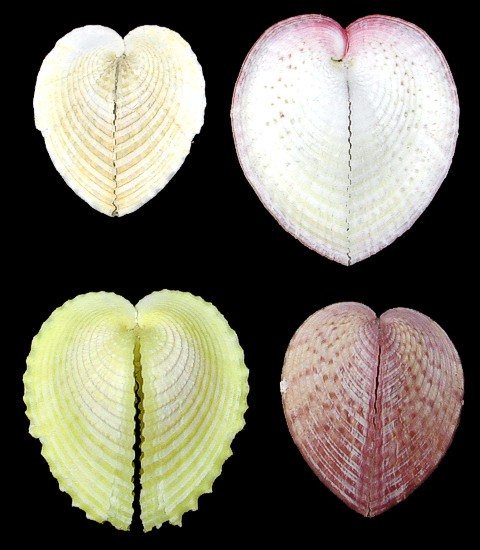
Heart Cockle Shell
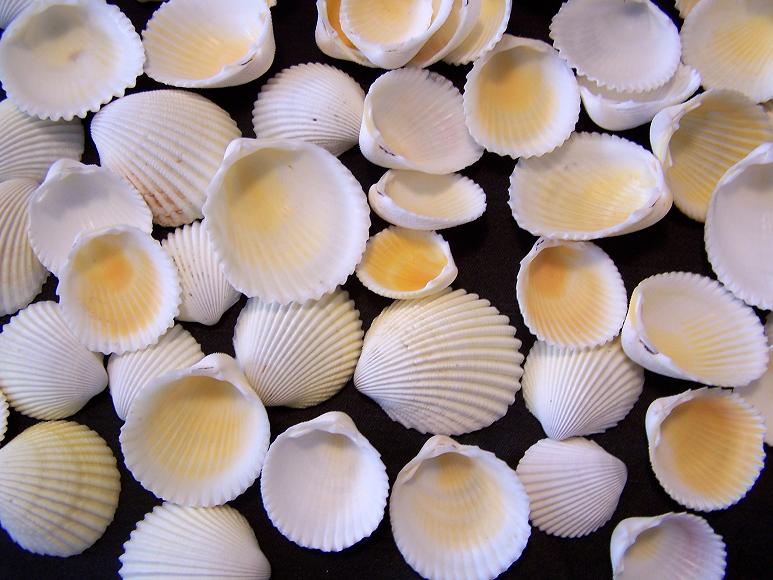
Butter Cream Cockle
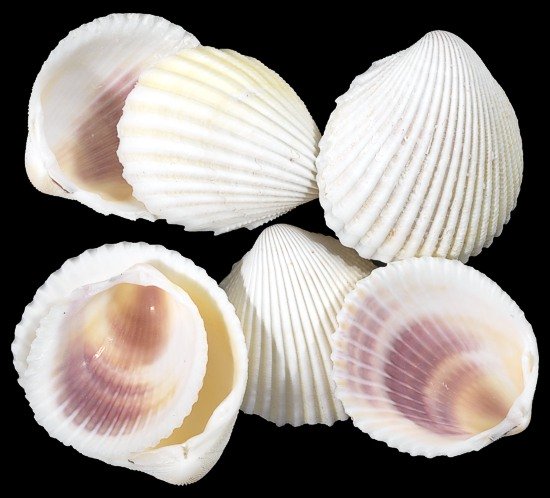
THE ROSE COCKLE IS FROM THE INDO-PACIFIC REGION
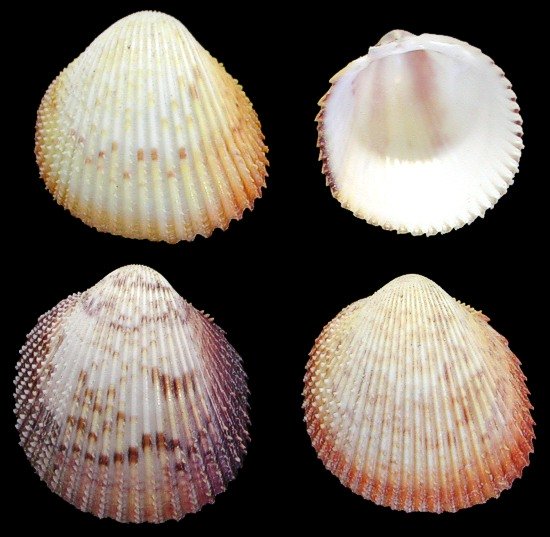
HAITION ROSE COCKLE
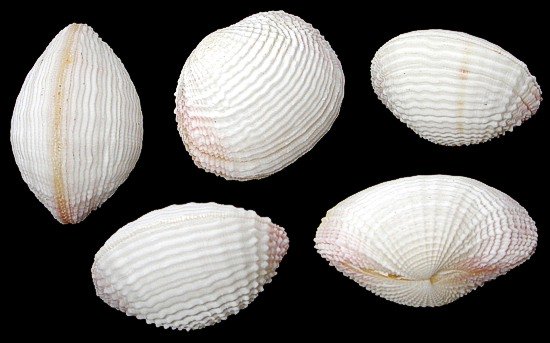
AMERICAN COCKLE SHELL
W0-10
One American Cockle 2 inches or less...... .69
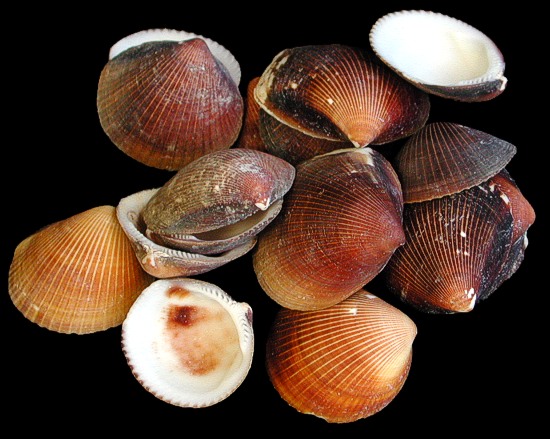
BROWN COCKLE SHELL
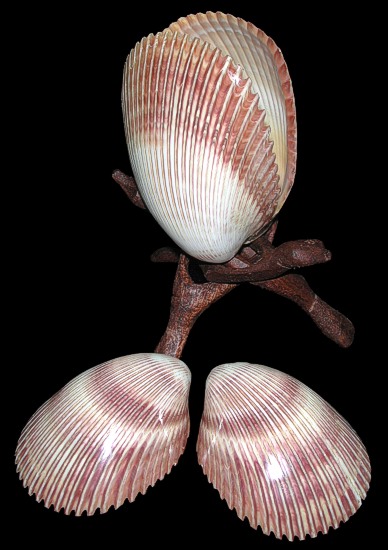
GIANT POLISHED COCKLE SHELL
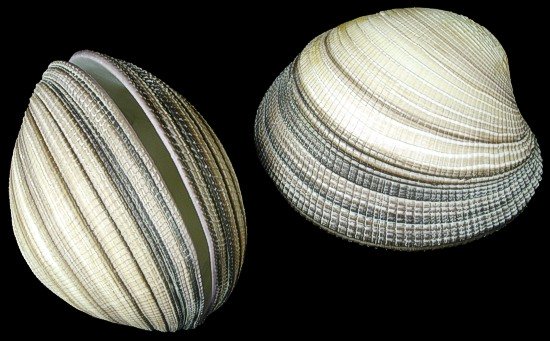
NATURAL HEAVY COCKLE SHELL
W1-6
One Natural Heavy Cockle shell pair a matching top and bottom 4 3/8 inches or less......$3.50
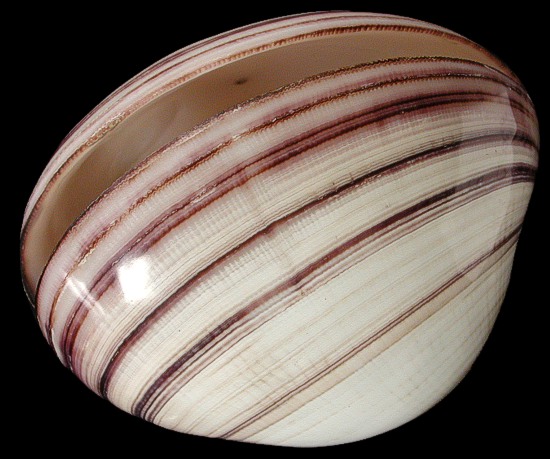
NATURAL POLISHED COCKLE SHELL
The Heavy Cockle is a bivalve shell. This means the mollusk (animal inhabiting the shell) creates a top and matching bottom shell. The Heavy Cockle like the Giant Cockle shells move thru the water by using their long powerful foot. The foot allows them to several inches as they move across muddy or sand bottom sea floors. The Heavy Cockle is found across the Indo-Pacific region, ranging from East African shores east to The northern Australian and New Zealand shoreline. They prefer moderately shallow water. Historically, Most cockle shell species have been a means of food for man as well as some predatory fish. This species has been known to reach 5 inches in size. The Heavy Cockle is common.
J1-3
One Polished Heavy Cockle shell pair a matching top and bottom shell 4 3/8 inches or less...... $4.75